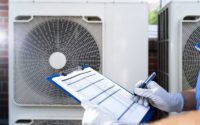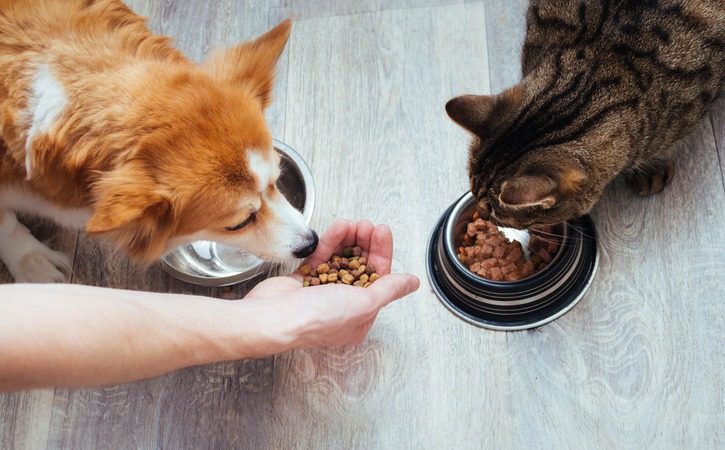When we take care of our pets, we usually think about shots, what they eat, and how much they move around. But keeping their teeth clean is just as important for their health. A pet’s mouth is important because it’s the first part of its body that touches food and other things. Keeping their mouth clean can stop many health issues. So, how often should we take our dog or cat to get their teeth checked? Let’s think more about why our pets need to get their teeth cleaned often.
The Basics of Pet Oral Health
Did you know that by the age of three, a majority of our pets have some form of dental disease? It’s a startling statistic that emphasizes the need for regular oral care. Gum disease, tooth loss, and more can stem from neglected teeth and gums, affecting not only their comfort but also their internal organs.
Maintaining a healthy mouth for your pet is not just about sweet-smelling breath. It’s about preventing pain, organ damage, and potentially life-threatening conditions. That’s why it’s crucial to get in front of any dental issues before they become severe.
How Often Should You Schedule a Dental Check-up?
The rule of thumb for pets is to have their teeth checked at least once a year. However, certain breeds and ages may require more frequent visits. Your vet can provide personalized advice for your pet’s unique needs.
Yearly dental exams are typically part of a routine dog check up. This is when your vet will poke around your pet’s mouth to look for early signs of trouble. They’ll check for plaque build-up, inflamed gums, and any other indicators that something’s wrong.
Recognizing the Signs of Dental Problems
While we’re on the topic, it’s vital for pet owners to spot the signs of dental distress. Here are some symptoms that should prompt a visit to the vet:
-
Bad breath
-
Difficulty eating or loss of appetite
-
Pawing at the mouth or face
-
Discolored, broken, or missing teeth
-
Red, swollen, or bleeding gums
-
Drooling more than usual
Remember, your pet can’t tell you when something hurts, so it’s up to us to be observant and proactive.
The Benefits of Regular Dental Care
There are ample reasons to keep tabs on your pet’s pearly whites, including:
-
Preventing tooth loss: Secure teeth are essential for your pet’s ability to chew and enjoy their food.
-
Avoiding pain: Dental issues can cause significant discomfort for your pet, which can go unnoticed due to their natural instincts to hide pain.
-
Protecting organs: Bacteria from periodontal disease can spread through the bloodstream and damage the heart, liver, and kidneys.
-
Saving money: Preventive care is more affordable than treating advanced dental disease or other secondary health issues.
But it’s not only about the vet visit; home care plays a big part, too. Regular brushing, dental-friendly toys, and treats can go a long way in keeping your pet’s mouth healthy.
Dental Care at Home
Between check-ups, there are plenty of things we can do at home to support our pets’ dental health:
-
Brush their teeth with pet-safe toothpaste.
-
Offer dental chews and toys that help scrape away plaque.
-
Feed them diets specifically formulated to support dental health.
-
Use water additives or dental sprays that contribute to oral hygiene.
Getting your pet to cooperate with animal dental care might be a challenge at first, but with patience and consistency, it can become a part of your daily routine. It’s never too late to start, but the sooner, the better.
What To Expect During a Pet Dental Exam
When it’s time for that yearly check-up, you might wonder what goes down during the dental portion. First, your vet will do a visual examination. If they spot any concerning areas, they might recommend dental X-rays to look for problems under the gum line. Anesthesia is typically used during a professional cleaning, which allows for a thorough job without causing stress or pain for your pet.
These cleanings often involve:
-
Removing plaque and tartar above and below the gum line.
-
Polishing teeth to smooth out any etches from the cleaning.
-
Inspecting each tooth and the surrounding gums for any signs of disease.
-
Treating any detected problems, which might include tooth extractions.
Yes, anesthesia sounds scary, but it’s common practice and very safe with today’s veterinary technology and protocols.
Choosing the Right Veterinarian for Dental Care
Not all vets are created equal when it comes to dental expertise. You’ll want someone who’s not only skilled with a scaler but also current on the latest in pet dentistry. Ask your vet about their dental qualifications and whether they do procedures like dental X-rays and tooth extractions.
If you need specialized care, don’t hesitate to ask for a referral to a veterinary dentist. They’re the experts when it comes to advanced issues and can provide specialized treatments your regular vet might not offer.
For those who want to look into this further, feel free to check here.
Preparing Your Pet for a Dental Check-up
Preparation is key to a stress-free dental exam for your pet. Familiarize them with having their mouth touched, and try to brush their teeth at home to get them used to the sensation. It’s also a good idea to keep them fasting if they’re scheduled for a cleaning, as anesthesia requires an empty stomach.
Final Thoughts
So there you have it. Regular dental check-ups are a critical component of your pet’s health regimen. A mix of professional cleanings and diligent at-home care best prevents dental issues. And while yearly is a good starting point, your pet’s specific needs might warrant a more customized schedule.
We shouldn’t wait for a bad tooth or sore gums to take notice of our pet’s oral health. Let’s commit to regular check-ups and preventative care to keep our furry friends smiling brightly for years to come. After all, a healthy pet is a happy pet, and their toothy grins are worth every bit of effort we put into keeping them shining.








